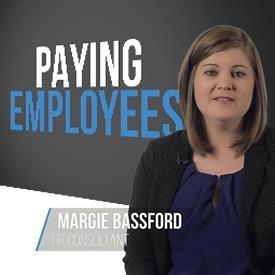- Recursos humanos
- Artículo
- Lectura de 6 minutos
- Last Updated: 02/01/2019
Avoiding High-Performing Employee Turnover is Half the Battle; The Other Half is Controlling Costs

Table of Contents
If you are the HR manager of a legal, accounting, architecture, or other firm that depends on the talent and the reputation of your people, then you know that when employees leave it comes with substantial costs. The loss of valuable employees is a continuous challenge to a professional services firm.
Because large firms often have more money to attract employees, small to medium-sized businesses (SMBs) may find themselves under enormous pressure to compete.
How do you attract and retain top talent without blowing your budget?
A new survey reveals that the top-performing SMBs in professional services (expecting revenue growth of 10 percent or more in 2018 over 2017) were more likely than their peers to rely on the latest technology to get more done in less time with fewer resources
The survey also discovered that hundreds of HR professionals across a broad range of firms are "very comfortable" (63 vs. 43%) using data analytics to help their company reduce costs and administrative errors. They are also more likely to gauge employees’ performance throughout the year to keep expectations on track.
HR staffers in these companies proactively foster employee engagement and invest in non-traditional benefits.
Top professional services organizations are 60 percent more likely than peer companies to measure engagement regularly via short online surveys and other tools.
These firms are “much more likely to report that they have engaged employees.” A 2017 Gallup’s workplace poll revealed that only 31% of U.S and Canadian workers felt engaged in their jobs.
For HR directors at firms in the professional services industry, finding ways to cope with the talent shortage is one of your biggest challenges. Our white paper, “Finders Keepers: How Up-to-Date HR Tech Helps Win the War for Talent,” shows how the right technology is critical to your success in finding — and keeping — top talent.
Getting costs under control
The most successful professional services organizations are more likely than other firms to automate benefits administration and provide self-service options for updating personal information, retirement contributions, etc.
Here are some of the other ways a professional services firm can help get costs under control:
- Form a business relationship with a professional employer organization (PEO) that can give your workers access to large-group coverage for benefits like medical, dental, and vision care, as well as life, disability, and workers' compensation insurance.
- Align your benefits with company priorities, and consider auditing underleveraged programs or perks. If you find they’re not worth the expense after your audit, you might want to cut them.
- Invest in HR software to manage costs. Tools such as time and attendance systems, employee self-service portals, and management reporting portals can help reduce the staff time spent on administrative tasks and free up your HR team to focus on more high-value activities.
Outsource to your advantage
Outsourcing some HR functions to reduce operating and HR administrative expenses is a more common practice among the top-performing SMB firms, according to our survey. Making the choice to outsource HR functions can be an important step in cutting costs, without eliminating benefits that employees value, or jeopardizing your ability to manage these functions accurately.
Bloomberg's HR Department Benchmarks and Analysis 2018 report revealed that 63 percent of HR departments relied on an outside service provider to handle at least one program or activity.
HR functions tend to remain outsourced once the initial shift to a third-party provider has taken place, indicating that employers that take advantage of HR outsourcing generally have a positive experience with the transition.
Seeking assistance with human resources may allow your company to control HR costs, such as payroll administration and employee benefits, while trying to stay compliant with regulatory demands.
Among the five most-cited HR challenges in the 2018 Paychex Pulse of HR Survey, “Keeping up with laws and regulations” came in first place. Generally speaking, many SMBs don’t have in-house experts in the complicated and ever-changing world of laws and regulations. Noncompliance can lead to penalties regardless of whether the employer knew of the requirement. It is essential to stay current with rules, regulations, and changes.
Companies may also utilize professional employer organizations (PEOs) to have access to HR consultants. In addition to increasing their potential to influence health care insurance pricing, strong PEOs can also be experts in current employment laws and compliance support, offering your company another layer of protection.
The right HR service provider can help your business manage these functions so you can focus your efforts on more strategic priorities.
Tags







